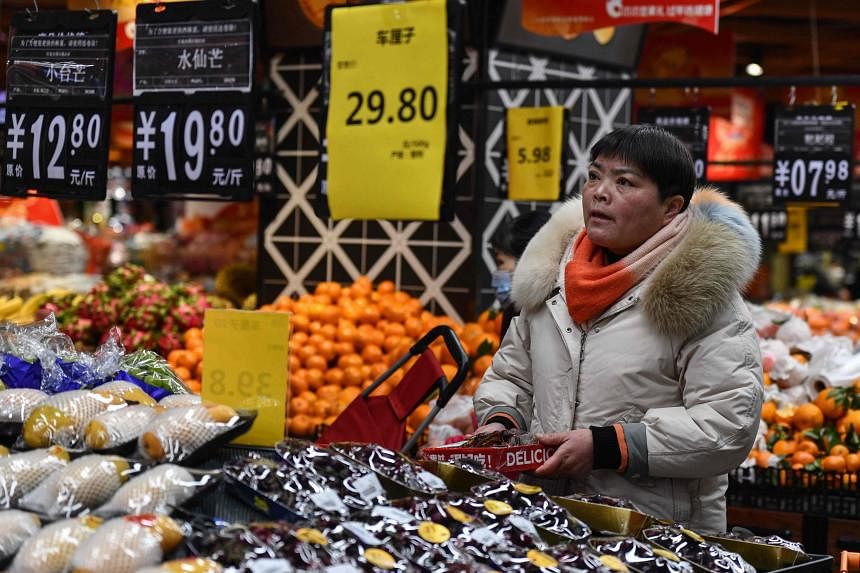BEIJING - China’s consumer prices barely increased from a year earlier in March, and industrial prices continued to slump, underscoring the deflationary pressures that remain a key threat to the economy’s recovery.
The consumer price index (CPI) rose 0.1 per cent in March from the prior year, the National Bureau of Statistics (NBS) reported on April 11. The median forecast of economists in a Bloomberg survey was a 0.4 per cent gain.
The inflation rate dropped from 0.7 per cent in February, when it had climbed above zero for the first time in six months during the Chinese New Year holiday.
Producer prices fell for an 18th straight month.
The price slowdown suggests China may not get much help from local shoppers to meet growth targets that increasingly rely on selling its manufactured goods abroad. In addition, with US inflation moving in the opposite direction, there is a risk of an enduring interest-rate gap between the world’s two biggest economies that could add downward pressure on the renminbi.
“The price data clearly mirrors the weak domestic demand,” said Mr Raymond Yeung, chief economist for Greater China at Australia & New Zealand Banking Group.
“The recent improvement in momentum is primarily export-driven.”
Before China’s CPI numbers came out, the central bank signalled continued support for the currency, after the offshore yuan weakened by the most in three weeks overnight on the US inflation surprise. It set its daily reference rate at 7.0968 per US dollar, exceeding forecasts by the most on record.
Higher inflation during the February holiday season, along with a tourism revival, had raised hope that Chinese households might be rediscovering their appetite to spend. Absent that, the country’s ability to hit its economic growth target of around 5 per cent in 2024 depends on overseas demand.
Buoyant exports and factory activity data in recent weeks encouraged Goldman Sachs and Morgan Stanley to raise their growth forecasts this week.
The slowdown in consumer inflation was due to “waning consumption demand in March seasonally after the holiday while market supply was generally sufficient”, said NBS analyst Dong Lijuan in a statement accompanying the release of the figures.
With the housing market slump showing no signs of a turnaround, subdued demand for building materials like steel is dragging producer prices down. The overall index declined 2.8 per cent, extending the longest falling streak since 2016.
Fading inflation may still ramp up pressure on China’s government to offer more support for the economy. Falling prices squeeze companies’ profit margins, discouraging them from investment, and there is a risk consumers could become even more reluctant to spend in anticipation that goods will be cheaper in the future.
But Mr Bruce Pang, chief economist for Greater China at Jones Lang LaSalle, pointed to a constraint for Chinese central bankers: higher-than-expected US inflation could delay easing by the Federal Reserve. That would make it harder for China to trim its own rates – even though it needs to – due to concern about further weakening of the yuan, he said.
In a sign that deflation could continue to haunt the economy in the coming months, price competition in some industries has intensified lately.
Companies that produce materials for construction, like zinc smelters, have been forced to lower their charges because of excess capacity, while electric car producers are offering aggressive discounts to lure customers.
Core inflation, which strips out volatile food and energy prices, slowed to 0.6 per cent in March from 1.2 per cent in February, according to the NBS. BLOOMBERG

